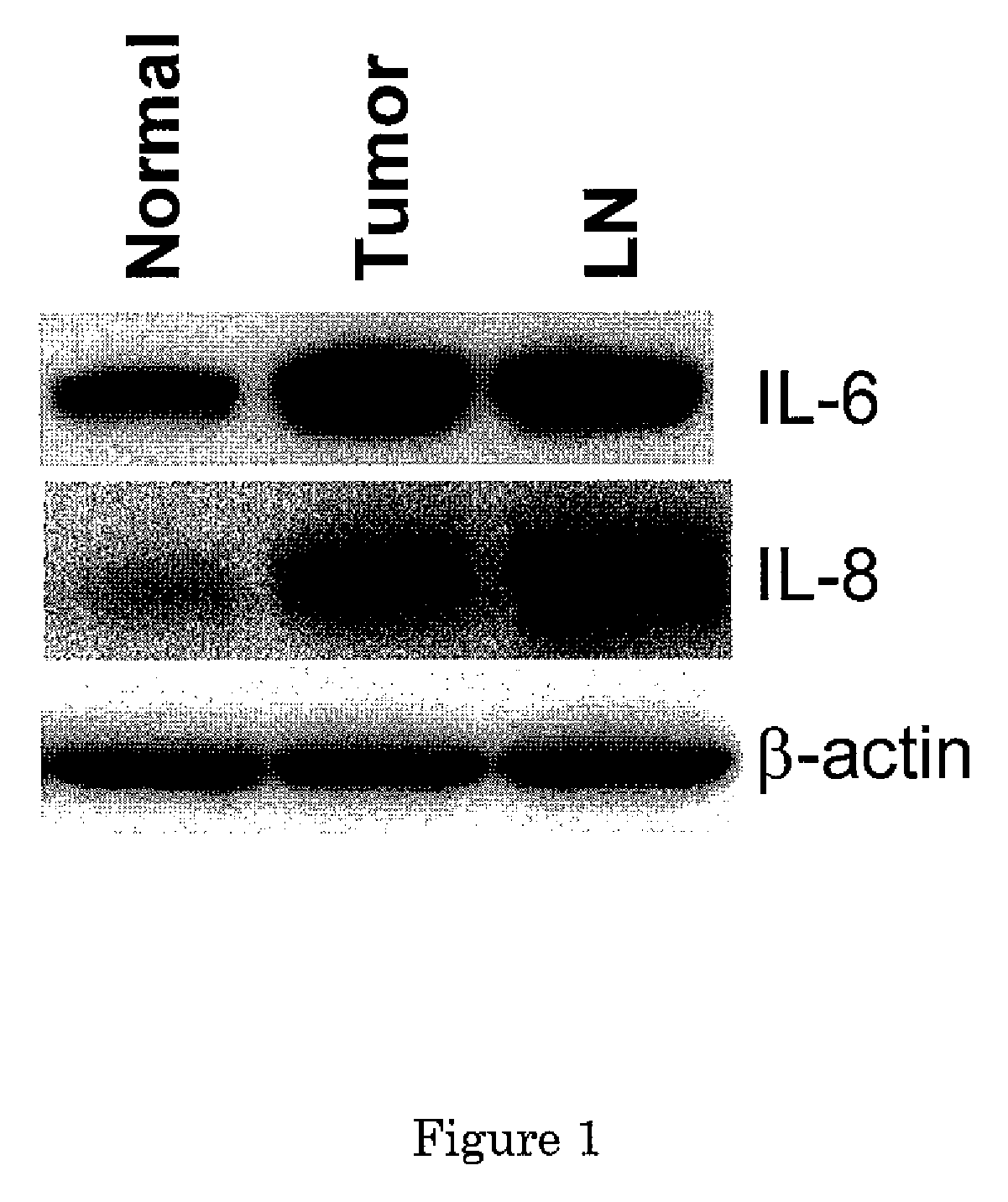Development of prognostic markers from the saliva of head and neck cancer patients
a cancer patient and prognostic marker technology, applied in the field of disease detection, can solve problems such as difficult control of advanced disease (stage iii or iv)
- Summary
- Abstract
- Description
- Claims
- Application Information
AI Technical Summary
Benefits of technology
Problems solved by technology
Method used
Image
Examples
Embodiment Construction
The molecular mechanisms for the progression of HNSCC cancers are not well understood and although HNSCC biomarkers have been identified, they are currently used to diagnose HNSCC in patients using biopsies from advanced stage cancers. Thus, there is a need for the development of new diagnostic tools for the early detection of HNSCC.
Biomarkers in saliva have the potential to be an important tool for early detection of HNSCC in patients, since HNSCC originates in the oral cavity, where saliva is in contact with the tumor site. The role saliva may have in the development and progression of HNSCC has been investigated. Since early detection is a key factor in the management of HNSCC and survival rate of HNSCC patients, the saliva from HNSCC patients were used in this study to determine if any biomarkers were present that may be used in the identification of early stage cancer.
The present invention provides biomarker and methods of using them to detect the development of cancer. More sp...
PUM
| Property | Measurement | Unit |
|---|---|---|
| pH | aaaaa | aaaaa |
| fluorescence flow cytometry | aaaaa | aaaaa |
| luminescent | aaaaa | aaaaa |
Abstract
Description
Claims
Application Information
 Login to View More
Login to View More - R&D
- Intellectual Property
- Life Sciences
- Materials
- Tech Scout
- Unparalleled Data Quality
- Higher Quality Content
- 60% Fewer Hallucinations
Browse by: Latest US Patents, China's latest patents, Technical Efficacy Thesaurus, Application Domain, Technology Topic, Popular Technical Reports.
© 2025 PatSnap. All rights reserved.Legal|Privacy policy|Modern Slavery Act Transparency Statement|Sitemap|About US| Contact US: help@patsnap.com

